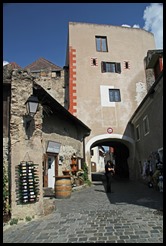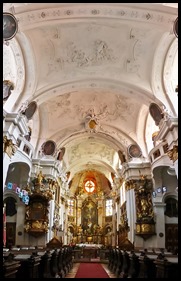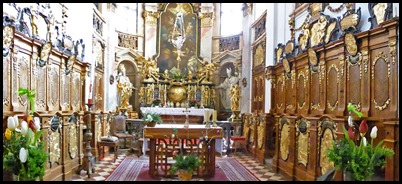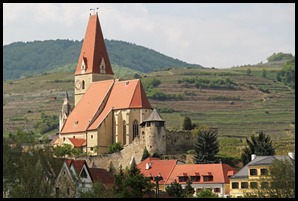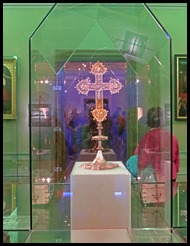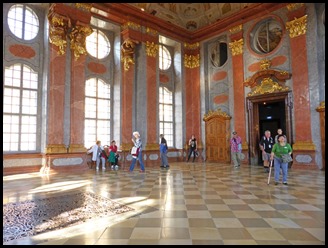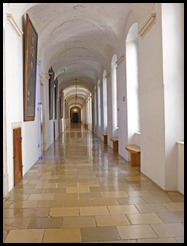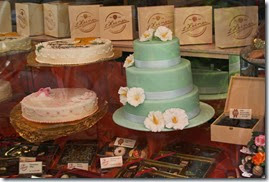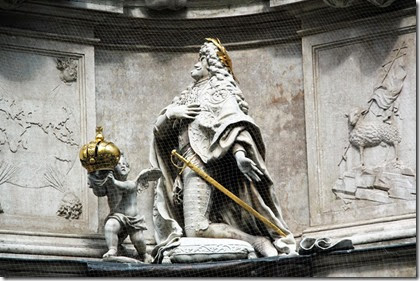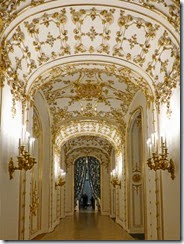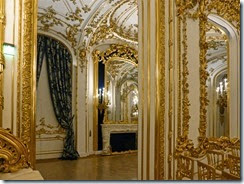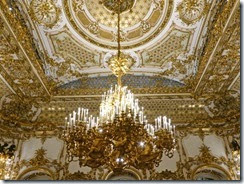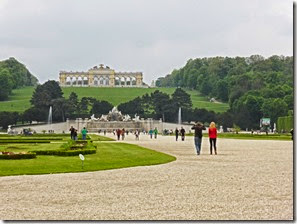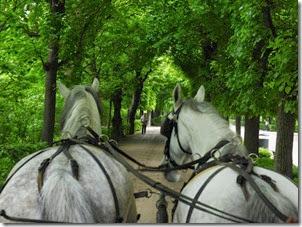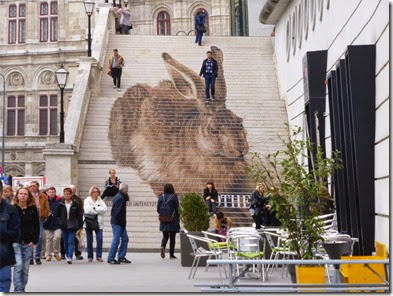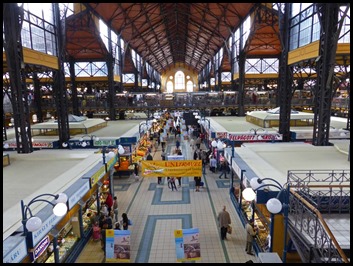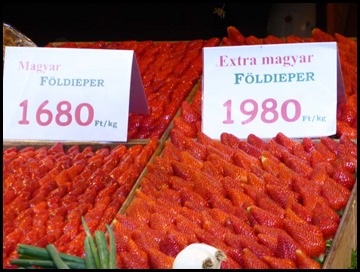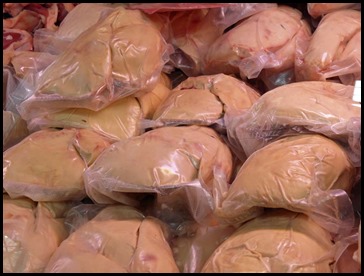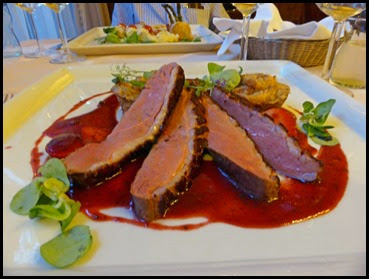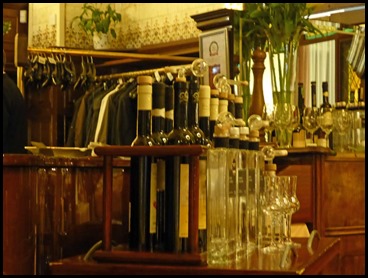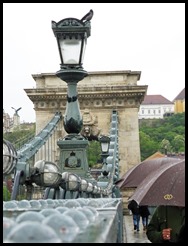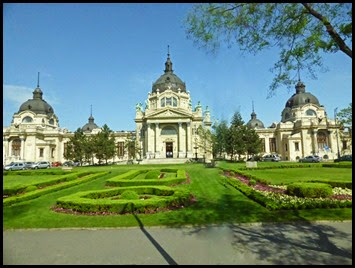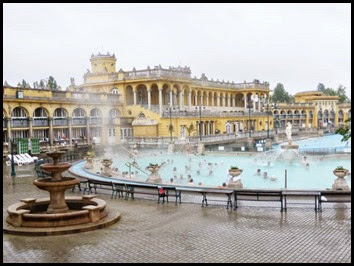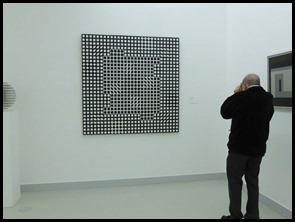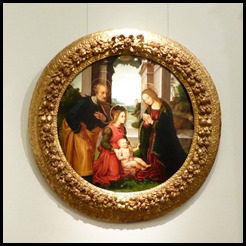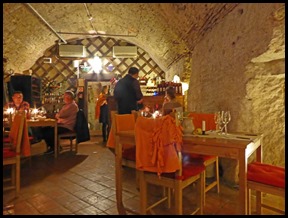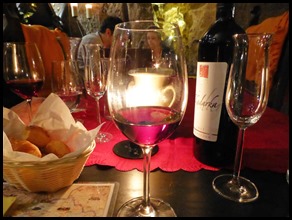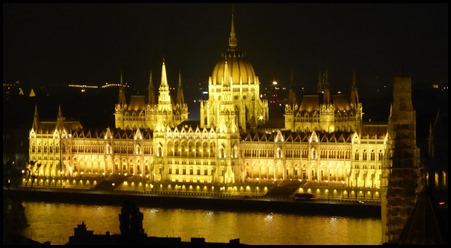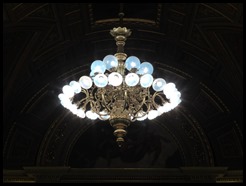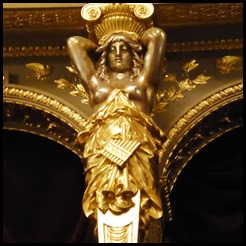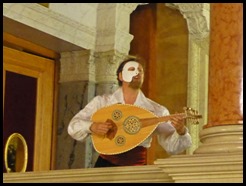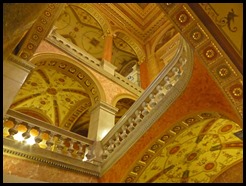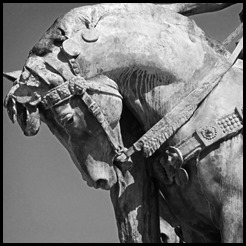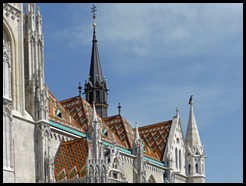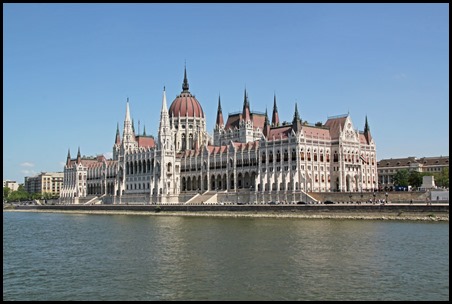A very busy day today with two towns to visit off the boat. In both cases local guides take smaller groups of people around so you have some idea of what you are seeing. As a plus, cruising through the Wachau Valley with its small towns and old castles.
Durnstein is a lovely small town on the banks of the Danube, famed for an ornate Baroque church tower that looks like it was made by Wedgewood, the pretty church itself, and white wine. the delicious Gruner Veldtliner. They also grow apricots due to a warm microclimate, and make apricot brandy, jam, liqueur, and anything else they can think of. Only about 900 inhabitants and I think the summer river tourists probably saved the economy of the place.
We had a wine and brandy tasting, a visit to the church and a wander around the pretty streets now mostly filled with shops, liquor sales and tourist souvenirs.
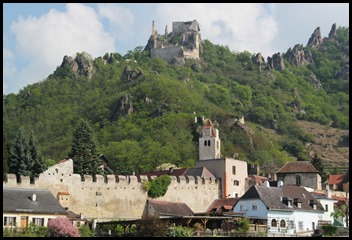 Durnstein castle ruins and Clairite monastery walls | |
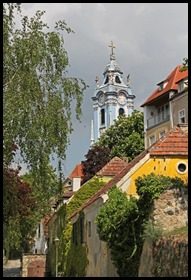  Houses and church tower | |
 The monastery and tower from the water |
Everywhere one sees the typical street signs for hotels and bars, ornate and distinctive.
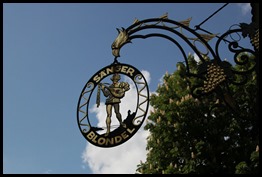 | 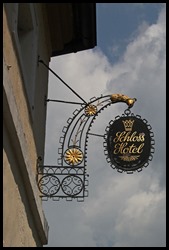 | 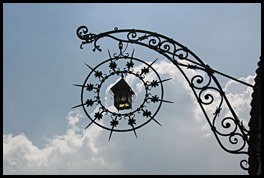 |
Forging on through the Wachau Valley there were lovely little villages and several castles to be seen.
Back onto the boat and on to Melk Abbey, arriving via the well planned coaches and with our own guides again within the abbey. Set on a bluff high above the medieval village it was well placed to be defended if needed.
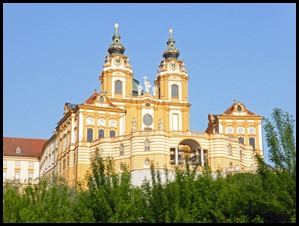
The place is still an active Benedictine abbey with 30 monks. Through an impressive courtyard and the renovated facade, now in Baroque style of course, to a quiet room where the rule and philosophy were explicated, then to the treasury with a few well exhibited chalices, crucifixes and monstrances then onto the library, still a very active one for research and for new acquisitions as well. The beautiful bound volumes were exquisitely done but no photos allowed in this space.
We learned that monasteries had to be big to accommodate all the guests who might visit, including the emperor and his retinue, so there were long corridors of guest rooms, quite apart from the monks quarters, which we did not visit of course.
The church itself is in high Baroque style with lots of gold and curlicues. Click on the picture for an enlargement
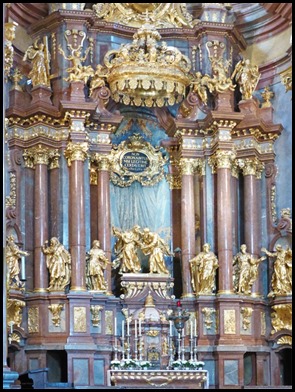 The high altar |
